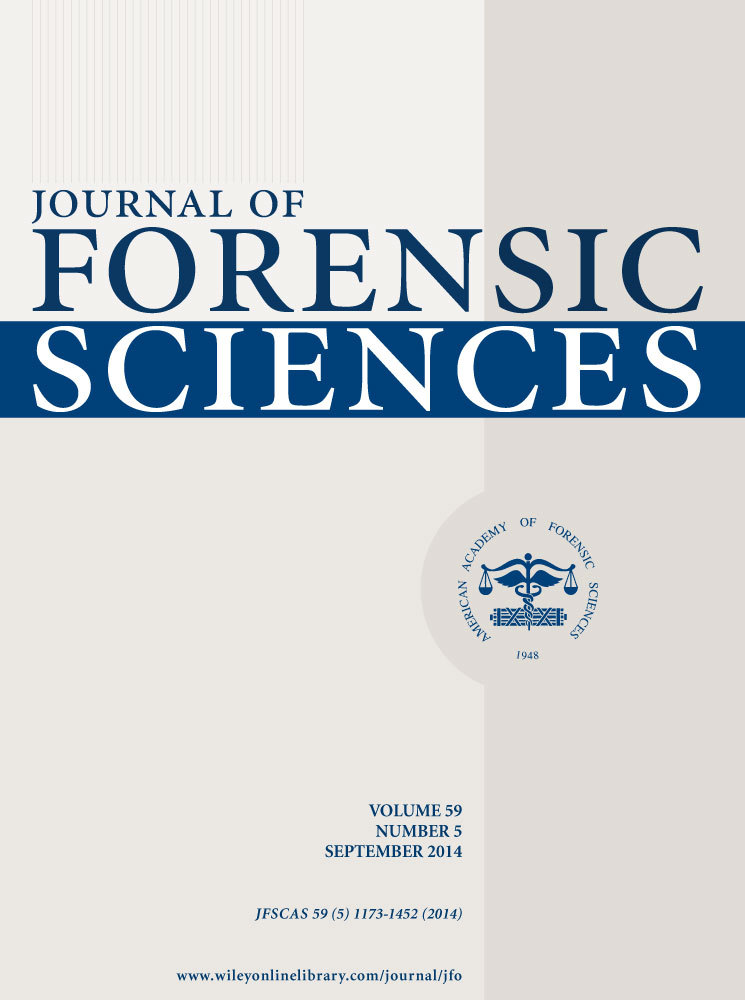Determining the Refractive Index Variation within Panes of Vehicle Windshield Glass
Abstract
Refractive indices of seven double-paned vehicle windshields were measured to assess the variation across the pane of glass and to evaluate collection techniques for known glass standards by comparing false negative rates. Measurements were made using a Foster and Freeman GRIM3 instrument, and a minimum of 240 measurements were made per pane. The mean SD of the windshields was 0.00004. It was further determined that collecting a known sample from two different sections of a shattered windshield gave the lowest rate of false negatives when using ± 2 standard deviations to estimate the RI variation of the known glass. Additionally, refractive indices often were highest in the center of the windshield and decreased toward the left and right edges; in approximately half the sample set, the two panes of a single windshield were differentiated by one or more properties.




